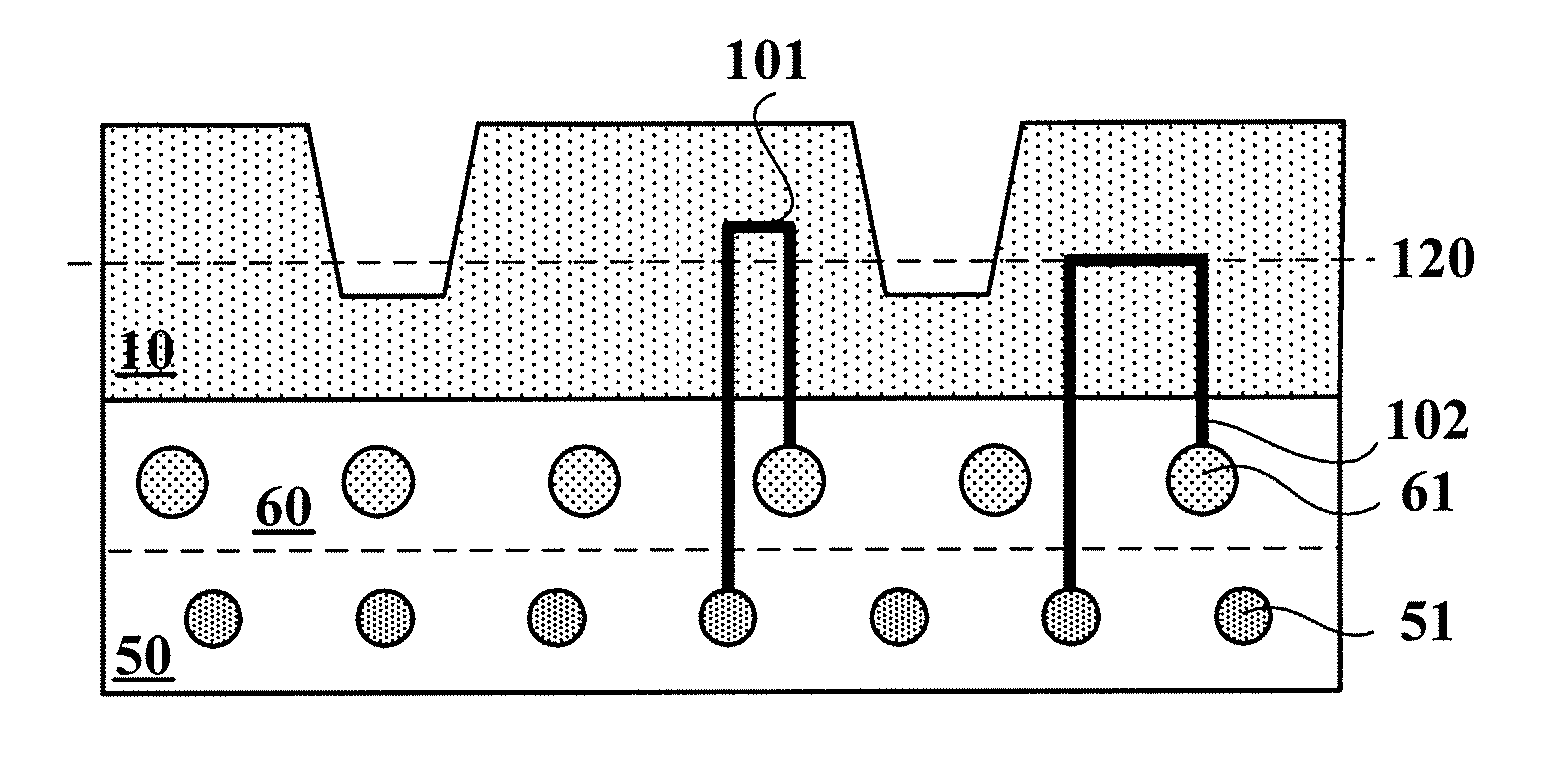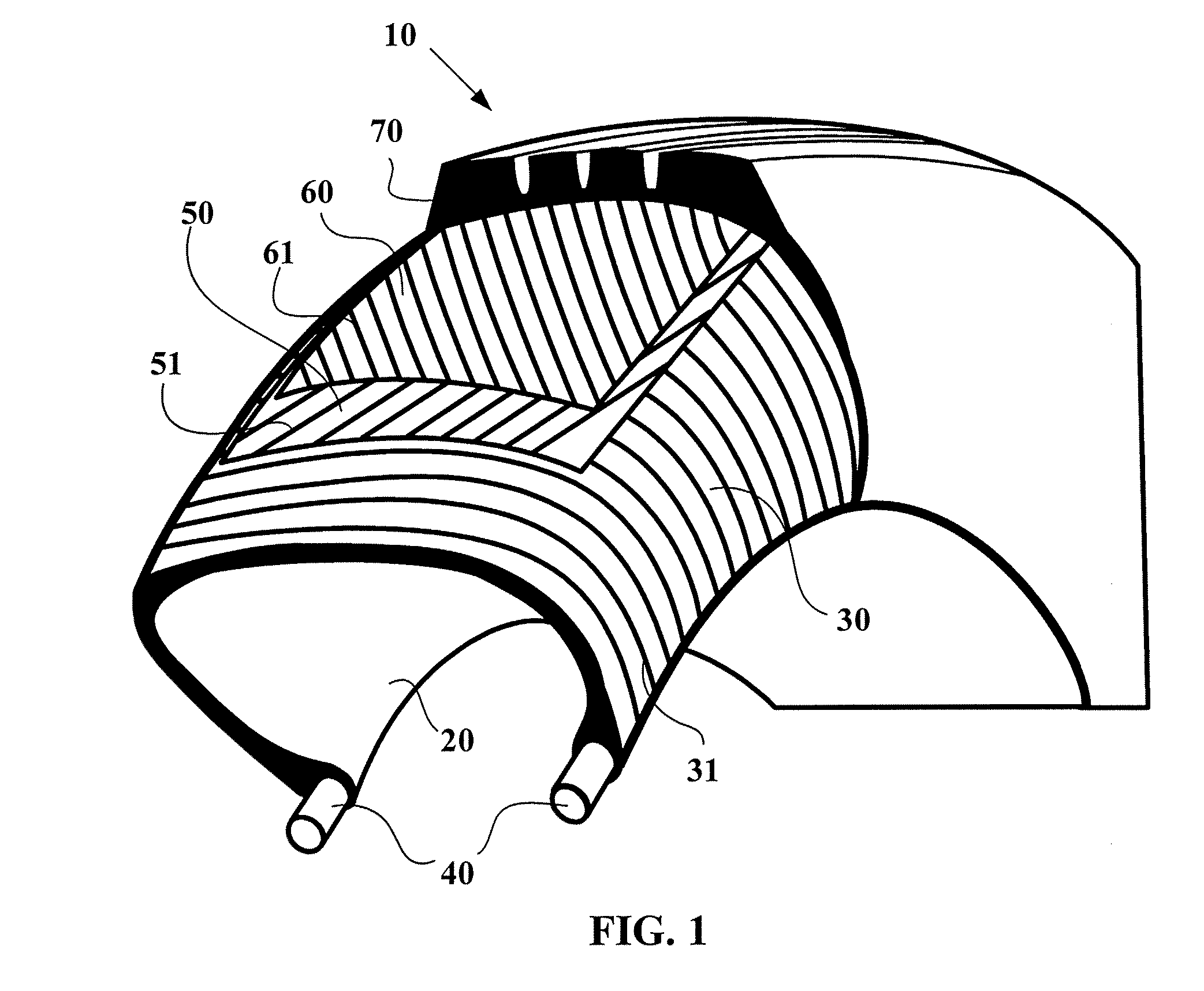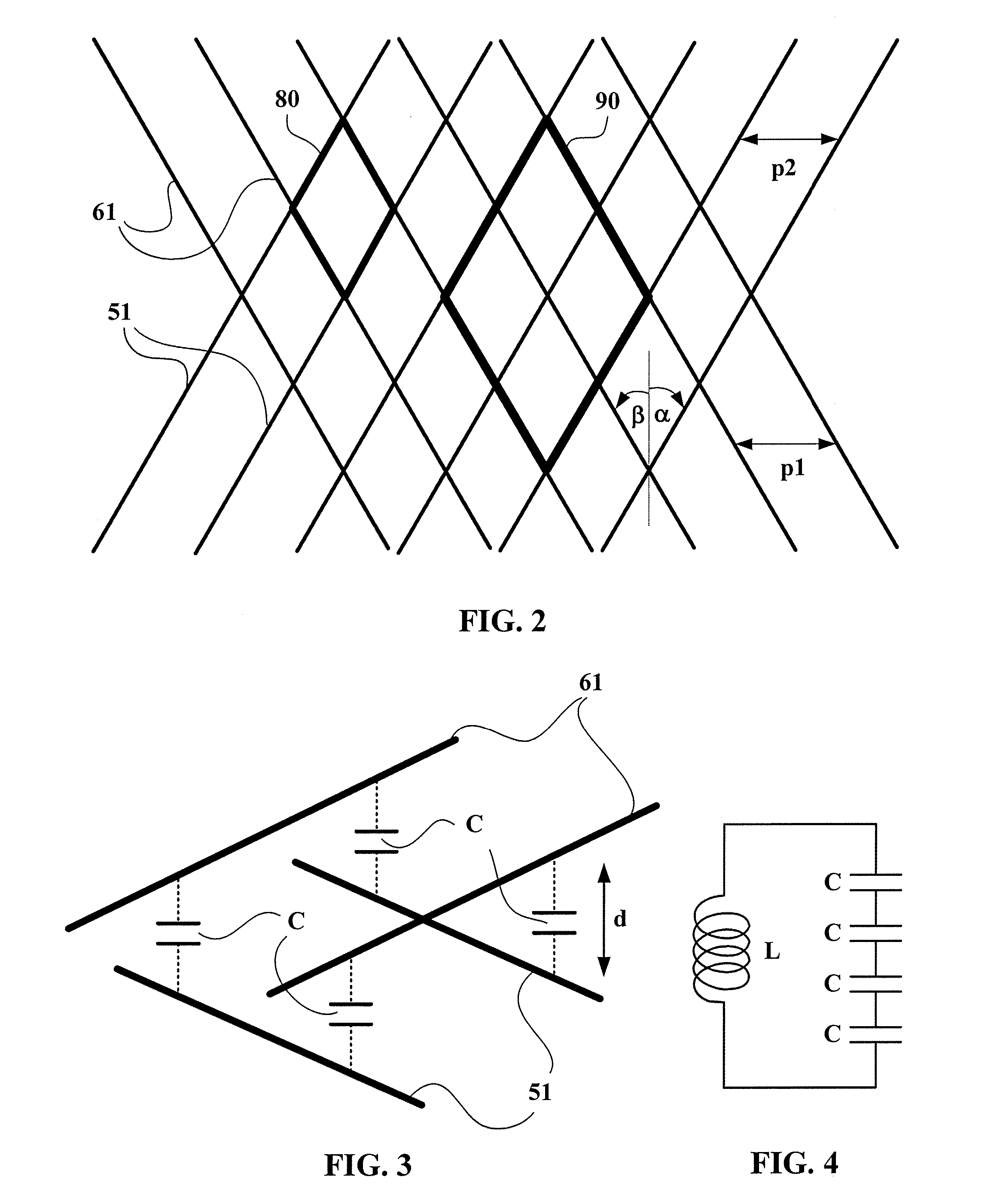Wear indicating tire
- Summary
- Abstract
- Description
- Claims
- Application Information
AI Technical Summary
Benefits of technology
Problems solved by technology
Method used
Image
Examples
Embodiment Construction
[0033]FIG. 1 schematically represents the structure of a radial pneumatic tire 10 comprising an inner liner 20 made of airtight synthetic rubber, a carcass ply 30 composed of textile cords 31, laid down in straight lines and sandwiched in rubber, bead wires 40 holding the tire 10 onto the rim (not illustrated), a breaker belt made of at least two radially adjacent breaker plies 50 and 60, and a tread 70 laid over the breaker plies 50 and 60 to be in contact with the road. Each of the two breaker plies 50 and 60 of tire 10 is reinforced with steel cords 51 and 61 that are inclined with respect to the equatorial plane of the tire at an appropriate angle (typically around 20°). In this embodiment, the cords 51 of one ply are inclined oppositely to the cords 61 of the other ply.
[0034] This particular arrangement of the plies included in the breaker belt explains the strong absorption of electromagnetic radiation in the belt. As schematically represented in FIG. 2, the sets of cords 51 ...
PUM
 Login to View More
Login to View More Abstract
Description
Claims
Application Information
 Login to View More
Login to View More - R&D
- Intellectual Property
- Life Sciences
- Materials
- Tech Scout
- Unparalleled Data Quality
- Higher Quality Content
- 60% Fewer Hallucinations
Browse by: Latest US Patents, China's latest patents, Technical Efficacy Thesaurus, Application Domain, Technology Topic, Popular Technical Reports.
© 2025 PatSnap. All rights reserved.Legal|Privacy policy|Modern Slavery Act Transparency Statement|Sitemap|About US| Contact US: help@patsnap.com



